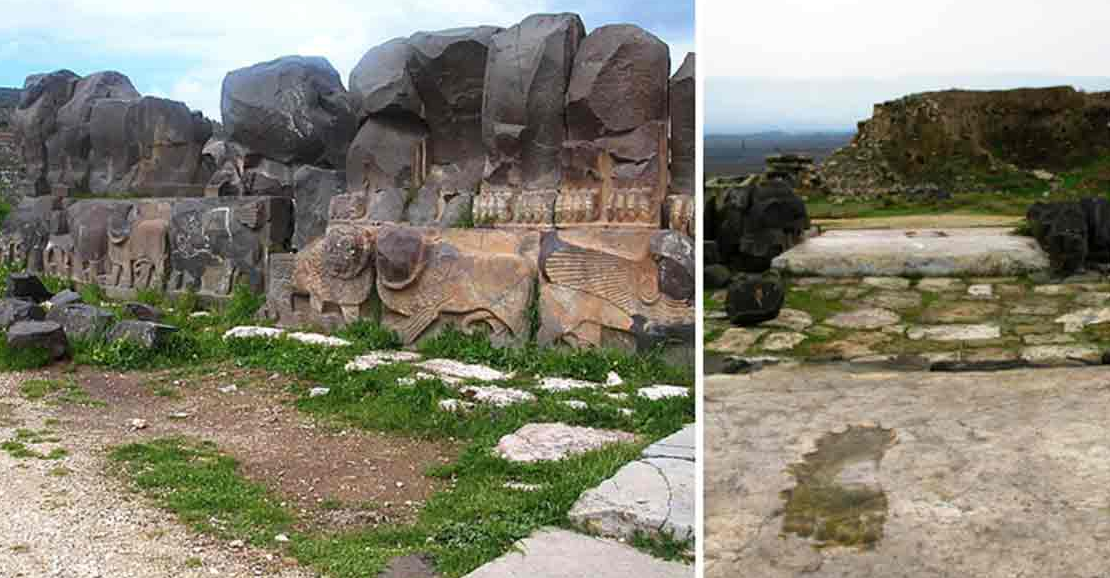Ain Dara is a small village in the northwest of Aleppo, Syria, which, until 2018, boasted a remarkable structure – the Ain Dara Temple, located just west of the village. The temple was discovered in 1955, when a colossal basalt lion was found, quite accidentally, in fact. Following this find, excavations were carried out in subsequent years. Sadly, in 2018, the whole remarkable structure was reduced to ruble by a Turkish airstrike.
This temple, believed to have been constructed during the Early Iron Age, boasted distinctive features such as its grand courtyard, elaborate basalt reliefs, and enigmatic carved footprints on its stone floor. With its monumental staircase and intricate layout, the temple bore striking resemblances to biblical descriptions of Solomon’s Temple in Jerusalem, hinting at a broader cultural tradition that characterized the region during this period. Through its architectural magnificence and cultural significance, the Ain Dara Temple offered a captivating glimpse into the rich tapestry of ancient Near Eastern civilizations.
Top 15 European beach destinations, Andros and Alonissos shine in tourism rankings
Ain Dara Temple: A Testament to Syro-Hittite Influence
The Ain Dara Temple was an Iron Age Syro-Hittite temple. The Syro-Hittites or Neo-Hittites were a group of political entities that emerged towards the end of the 2nd millennium BC. Following the collapse of the Hittite Empire, there was a power vacuum in the Eastern Mediterranean. The Syro-Hittite states filled this vacuum and became the dominant power in the region until their conquest by the Neo-Assyrian Empire at the end of the 8th century BC.
Continue here: Ancient Origins
Ask me anything
Explore related questions





